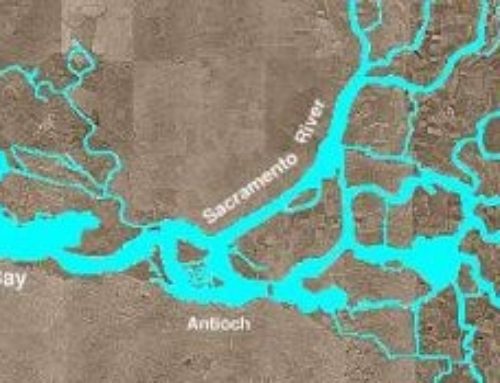-
We are swinging into the hottest part of the year in California (I hope!) and I’d like to remind you to abide by California’s Water Efficient Landscape Ordinance. Here’s a review of the ordinance and some good tips from a Northern California landscaper. Thanks to catherine Elvert of the City of Palo Alto for sending this along.
Time to Use Less Water: Water-efficient landscape ordinance vs. your garden
It’s here and it’s here to stay. Since Jan. 1, 2010, a new Water-Efficient Landscape Ordinance (WELO) is in effect for the state of California.
Depending on the community you live in, the ordinance’s wording, regulations and enforcement will be slightly different, but all versions have a common set of goals, which are much applauded by landscape professionals and environmentally conscious homeowners alike:
— Water-efficient landscapes will stretch our limited water supplies:
Fifty to 70 percent of our drinking water is used to irrigate our gardens and much of it goes to the thirsty lawns. Reducing the water needs of your garden is the best thing you can do to save water in our year-long drought situation.
— Reduced irrigation runoff:
Avoiding irrigation runoff from overspray and misting will reduce the pollution of waterways and lead to less property damage.
— Less green waste:
Reducing watering means less green waste. A lot of plants that are very generously watered react with growth spurts that in turn lead to more pruning. Limiting the watering to a reasonable amount saves green waste and — even better — your manual labor. Get your Saturday afternoon back and save money at the same time.
— Increased drought resistance:
Water-wise gardens will survive even if we run into serious drought conditions. The lawn will not. A water-wise garden can look as beautiful and lush as any other garden.
— Smaller carbon footprint:
A low-maintenance, drought-tolerant, sustainable garden has a much smaller carbon footprint than a garden that needs to bring a lot in (fertilizer, mulch, annuals) or get a lot out (green waste). Stick with perennial native or Mediterranean plants, compost your green waste, and use your compost as a mulch to feed and protect your plants.
Most water districts offer additional incentives to convert to a more water-wise landscape. Santa Clara Valley Water District (SCVWD) for example offers landscape-rebate programs (rebate) to replace irrigation and even entire landscapes: Santa Clara County single- and multi-family homes with gardens of any size and business properties with 5,000 square feet or more of irrigated landscape can receive rebates for replacing high water-using plants — such as irrigated turf grass — with low water-using plants from their approved plant list and/or permeable hardscape.
With the City of Palo Alto matching SCVWD rebates, single-family homes can receive up to $3,000 and business properties can be given up to $30,000. See SCVWD’s website for details and eligibility. And always have your landscape pre-approved and pre-inspected before you start construction.
The Water-Efficient Landscape Ordinance helps to achieve the goals laid out above by giving cities, counties and other agencies tools to understand and predict the water-usage of a property. One of these tools is calculating a water budget.
There are two interesting numbers: The Maximum Applied Water Allowance (how much a landscape of a certain size and in a certain area should be using), and the Estimated Total Water Use (how much you estimate your new landscape will use).
Other tools are landscape, irrigation, grading and drainage plans as well as a soil test performed by a soil-testing lab to help the homeowner plan and understand the needs of the landscape better.
These requirements for calculations and plans sound scary at first, but many municipalities are considering moving to easier models such as one or two plans and/or a simple checklist that asks the homeowner questions such as:
How much lawn do you have on your property (in percent)?
How much of your planting area is planted with drought-tolerant plants such as California natives or Mediterranean plants?
Talking to Catherine Elvert from the City of Palo Alto, I learned that Palo Alto is currently enforcing the state’s model ordinance. However, since the new mandatory CALGreen standards and landscape ordinance share some requirements for outdoor water efficiency and face similar timelines for adoption, Palo Alto will be incorporating the WELO requirements into their update to the Green Building Code, which will go into effect in January 2011. A new and easier checklist-type of documentation may also be in the near future.
According to the state’s model ordinance, new non-residential landscapes with an irrigated area larger than 2,500 square feet, new homeowner provided residential landscapes with an irrigated area larger than 5,000 square feet, as well as existing landscapes more than 1 acre are subject to the ordinance. The new integrated ordinance in the future may lower these thresholds.
And even though it may not ever be required for your garden, why not build a water-wise, sustainable garden anyway? They are beautiful and you’ll save the environment and your time and money (for watering, pruning and mowing) at the same time.
Astrid Gaiser, APLD, is a landscape designer, horticulturist and Certified Green Building Professional. Information: 650-224-2895, Astrid@astridgaiser.com, Astrid Gaiser






